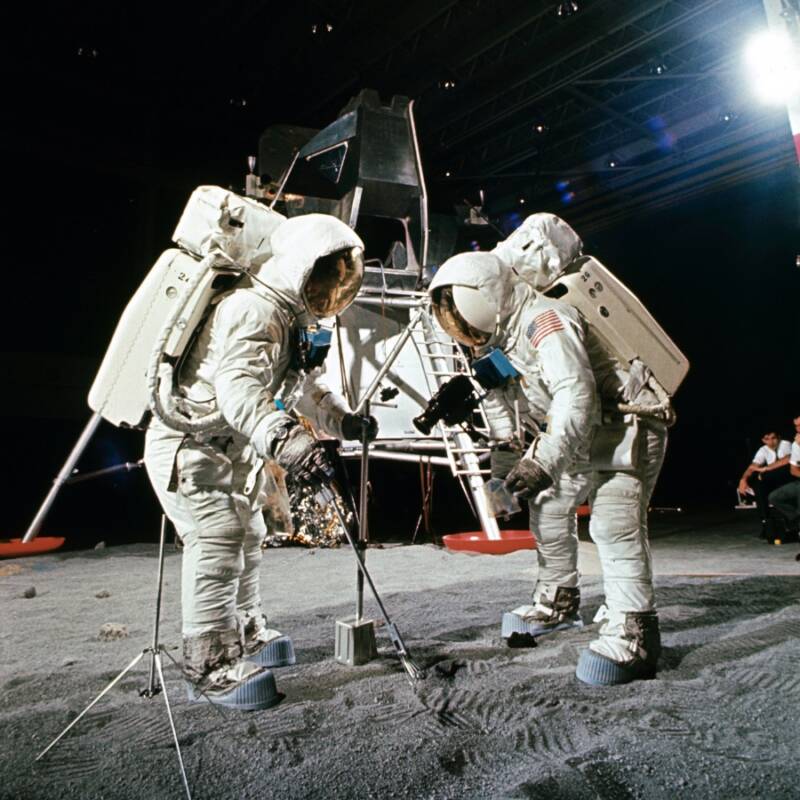On July 20, 1969, American astronauts landed on the Moon — or did they? Despite the historic celebration when Apollo 11 seemingly touched down on the lunar surface, doubts quickly emerged about the authenticity of the Moon landing.
In 1976, Bill Kaysing published a pamphlet titled “We Never Went to the Moon: America’s Thirty Billion Dollar Swindle.” Kaysing, who had worked for Rocketdyne, the NASA contractor that built the Apollo mission engines, claimed that NASA lacked the technological capability to achieve a Moon landing and insisted he could prove it. In his pamphlet, he highlighted anomalies such as the absence of stars in the sky, the lack of a crater beneath the lunar module, and inconsistencies in the light and shadows in the Moon landing videos and photos.
Since 1969, various other theories have emerged. Some suggest that the radiation in space would have been fatal to the astronauts, while others point to the American flag appearing to flap without wind. Additionally, questions have arisen about why Moon missions ceased after the 1970s.

On July 20, 1969, the world watched in awe as American astronauts seemingly landed on the Moon. The Apollo 11 mission, with Neil Armstrong’s iconic words, “That’s one small step for man, one giant leap for mankind,” became a symbol of human achievement. However, doubts and conspiracy theories soon emerged, questioning the authenticity of the Moon landing. Was it all a grand hoax?
Early Doubts and Skepticism
Initial Reactions and Polls
Just a year after the Moon landing, a surprising poll revealed that about 30% of Americans doubted the event’s authenticity. People questioned how it was possible to transmit live video from the Moon when TV reception on Earth was often poor.
Newsweek Interviews and Public Doubts
Newsweek interviews from the same period showcased Americans claiming the Moon landing was staged in a desert. These skeptics argued that the event was a distraction from domestic issues and technological limitations of the time.

Bill Kaysing and His Claims
Who is Bill Kaysing?
In 1976, Bill Kaysing published “We Never Went to the Moon: America’s Thirty Billion Dollar Swindle.” Kaysing, a former Rocketdyne employee (a NASA contractor), provided fuel to the conspiracy theories.
Kaysing’s Anomalies and Arguments
Kaysing highlighted several so-called anomalies:
- Lack of Stars: The sky in the Moon landing photos showed no stars.
- No Crater: The lunar module didn’t leave a crater upon landing.
- Lighting and Shadows: Inconsistencies in light and shadows in photos and videos.
Studio Filming Theory
Kaysing asserted that NASA faked the rocket’s takeoff and landing, filming the entire Moon landing in a studio. His ideas resonated with many and laid the foundation for future conspiracy theories.
Other Theories and Anomalies
Radiation in Space
Some theorists argue that space radiation would have killed the astronauts. The Van Allen radiation belts, in particular, are often cited as deadly obstacles.
Flapping American Flag
The American flag on the Moon appeared to flap without wind. Skeptics claim this indicates it was filmed on Earth, where wind could affect the flag.
Abrupt End to Moon Missions
Why did missions to the Moon stop after the early 1970s? Some suggest it’s because there was nothing more to fake, while others point to budget cuts and shifting priorities.
The Power of Belief and Doubt
Statistics on Belief
Today, an estimated 5% of Americans strongly believe the Moon landing was faked, 6% somewhat believe it, and 7% are unsure. This enduring skepticism highlights the power of conspiracy theories.
Why Do People Believe?
Conspiracy theories often thrive because they provide simple answers to complex events. They tap into distrust of authorities and a desire for hidden truths.
Examining the Evidence
Scientific Refutations
Scientists and experts have refuted Moon landing conspiracy theories through detailed analysis and evidence:
- Star Visibility: The camera settings used to photograph the brightly lit lunar surface wouldn’t capture the dim stars.
- Lunar Module Impact: The lunar surface’s composition explains the lack of a crater.
- Light and Shadows: Multiple light sources, including the Sun and reflected light from the lunar surface, account for shadow inconsistencies.
Radiation and Safety
NASA addressed radiation concerns with proper shielding. The short duration of the Apollo missions also minimized exposure.
Flag Movement
The flag’s apparent movement was due to its design. It had a horizontal rod to hold it out and appeared to move as astronauts adjusted it.
End of Moon Missions
The cessation of Moon missions was primarily due to high costs, shifting political priorities, and the focus on other space exploration goals.
Conclusion
The Moon landing remains one of humanity’s greatest achievements. While conspiracy theories persist, the overwhelming evidence supports the reality of the Apollo 11 mission. Skepticism is a natural part of human nature, but critical thinking and scientific inquiry can separate fact from fiction.




